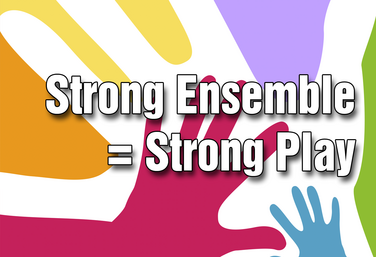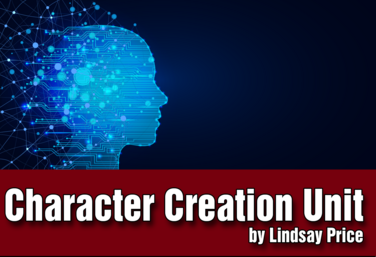Courses

Strong Ensemble = Strong Play
by Craig Mason

Laban: Advanced Characterization
by Todd Espeland

The Dilemma Project
by Claire Broome
Units

Character Creation: Superhero Series: Multi platform
by Lindsay Price and Kerry Hishon

Perspective Taking
by Lindsay Price
Lesson Plans
Status Monkeys
by Anna Porter
Subtext with Secrets
by Anna Porter
Show and Tell Switch
by Anna Porter
Reflection in Role: Character Development Through Script Analysis
by Lindsay Price
The Speed Date
by Stephanie-Ann Cocking
Character Development in the Shakespearean Monologue
by Lindsay Price
Tactic Fairies
by Anna Porter
Creating a Voice for a Character
by Elisabeth Oppelt
I am a Fortress: Character Development
by Lindsay Price
Character Improv
by Marisa Peck
Shakespearean Language: Match the Quotes
by Lindsay Price
Tactics
by Elisabeth Oppelt
Objectives
by Elisabeth Oppelt
Superhero Public/Private
by Lindsay Price
It’s all in a name: Character Building
by Lindsay Price
Emergency Lesson Plan: Who Am I?
by Lindsay Price
Silent Story: Show Don't Tell
by Lindsay Price
Preparing a Scene
by Lindsay Price
Rejection through Movement and Character
by Lindsay Price
Costuming: Fashion Trends Onstage
by Holly Beardsley
Crumpled Paper
by Karen Loftus
Rock Paper Scissors Status
by Karen Loftus
Subtext: Pass the Salt
by Lindsay Price
Improvisation: Characters
by Jennine Profeta
Emergency Lesson Plan: What Happens After “The End”?
by Lindsay Price
Emergency Lesson Plan: What Happens Next?
by Lindsay Price
The Difference Between Want & Need
by Lindsay Price
Approaching Random Tasks in Character
by Kerry Hishon
Same Lines, Different Meanings
by Kerry Hishon
Emergency Lesson Plan: Character Study
by Lindsay Price
Question Your Character (Without Judgement)
by Kerry Hishon
Resources
Scenes for Classroom Study: Body Body
Scenes for Classroom Study: Boys and Girls
Scenes for Classroom Study: Still as Stone
Scenes for Classroom Study: Sunday Lunch
Scenes for Classroom Study: Sweep Under Rug
Scenes for Classroom Study: The Bright Blue Mailbox Suicide Note
Scenes for Classroom Study: Look Me in the Eye
Scenes for Classroom Study: Betweenity
Scenes for Classroom Study: You
Scenes for Classroom Study: Among Friends and Clutter
Character Development: Shakespeare
Scenes for Classroom Study: The Four Hags of the Apocalypse Eat Salad at their General Meeting
Scenes for Classroom Study: Hoodie
Scenes for Classroom Study: Body Body (Scene 2)
Duet Characters List
A Midsummer Night's Dream Character Warm-up
Scenes for Classroom Study: Beauty and the Bee
The 10 Line Scene
Scenes for Classroom Study: The Snow Show
Headline Characters Exercise
Character Mask Profile
Laban's Eight Efforts
Uta Hagen's 9 Questions
Shakespeare Exercise: Physicalizing the Punctuation
Shakespeare Exercise: Tomb Scene
High and Low Status
Language Profile Sheet
Character Maps
Character Menu
Commedia Stock Characters
Commedia Exercise: Opposite Day
Duo Scene Information Sheet
What Does Your Character Want to DO?
What STOPS Your Character?
Character Bio
PLCs

Tackling Difficult Characters Head-On
Hosted by Matt Webster, Lindsay Price, Alicia Green, Amy Patel